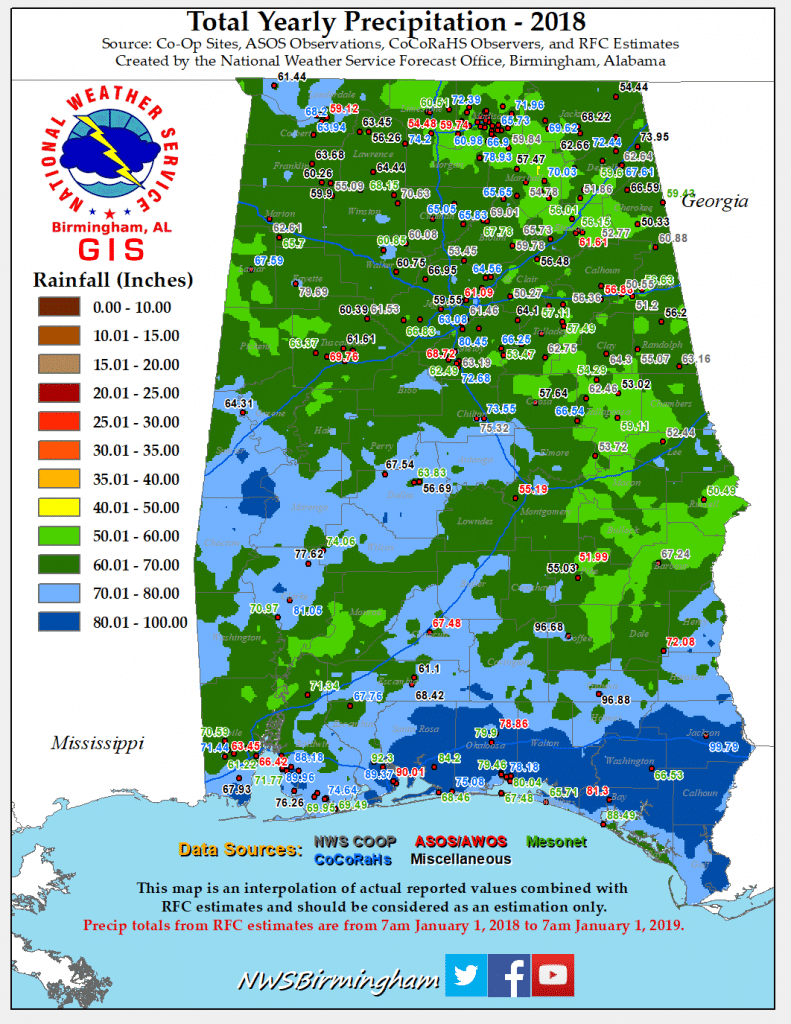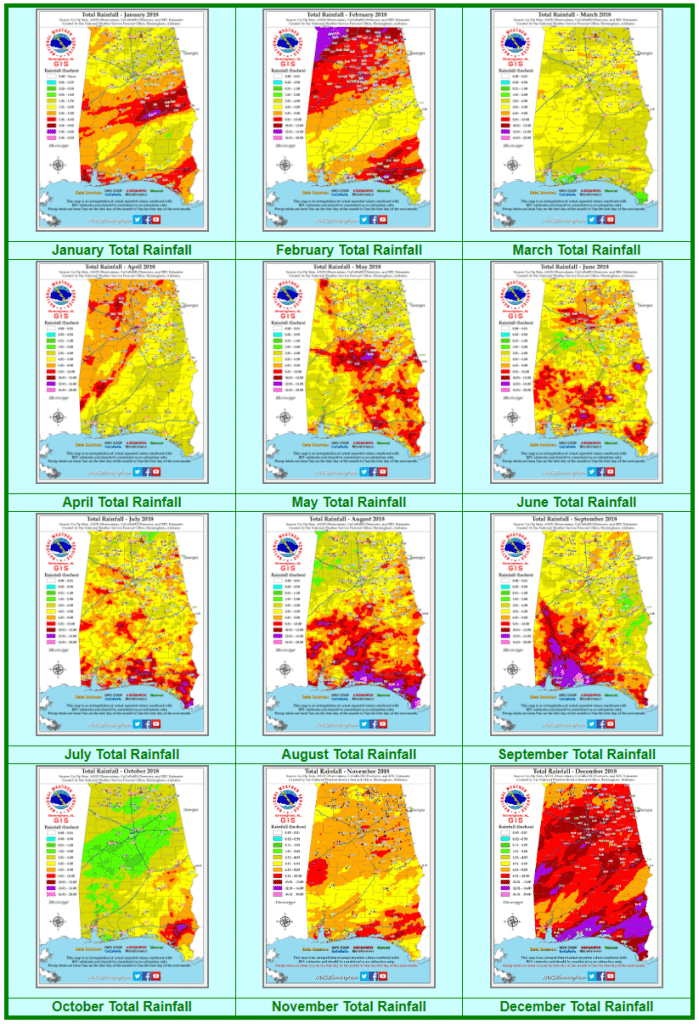End-of-year rains move every part of Alabama securely out of drought

Although it may feel like it after a wet December, 2018 was not a record rainfall year for Alabama. The rains did, however, bring an end to drought conditions throughout the state. (Getty Images)
What a difference one year makes.
A year ago this week, more than four-fifths of the state was as least abnormally dry, with more than a quarter of Alabama in a moderate drought.
But those dry conditions are history, especially following a very wet November and December.
As Alabama begins the new year, no portion of the state is dry, according to the U.S. Drought Monitor. But a rain-soaked year’s-end may make you think that 2018 was wetter than it truly was.

Indeed, it was an up-and-down (or down-and-up) 2018 when it came to rainfall in Alabama.
After starting off unusually dry, above-average rains hit much of the state in February, followed by below-average rainfall in March. From April into June, rainfall was above average, helping improve dry conditions in most places. Rains from Tropical Storm Alberto helped soak portions of the state in late May, causing flash flooding in some central and western counties.
The summer of 2018 fell into the more typical pattern of afternoon thundershowers, some severe. During July, there was flash flooding in sections of Tuscaloosa, Jasper and Gadsden. And heavy rains one day in late September caused brief flooding in Jefferson County, including downtown Birmingham, Bessemer, McCalla, Brighton and Hueytown.
October – typically a dry month – was even drier than normal – except for a few days in the middle of the month, when Hurricane Michael moved through the southeast and eastern edges of the state. While portions of Alabama received damage from Michael, it was nowhere near the devastation the storm left behind in eastern sections of the Florida panhandle.
Then came super-soggy November and December, which pushed rainfall totals for the year far above normal in some locations in Alabama. Birmingham, for example ended the year more than seven inches above normal, while Tuscaloosa reported its third-wettest year since 1948 at more than 17 inches above normal rainfall.

The rains of November and December also helped Alabama Power generate an above-average amount of power from its hydroelectric facilities during those two months – the fifth-highest total for the two-month period since the company began keeping records in 1928.
In the end, rainfall totals varied widely across Alabama in 2018, with nowhere in the state receiving less than 50 inches, and some sections of the hurricane-affected Wiregrass racking up more than 80 inches. Two weather stations near Dothan recorded a stunning 96.68 and 96.88 inches for the year. Average annual rainfall in Alabama is more than 55 inches, with rainfall totals averaging more than 65 inches closer to the coast.
For a more extensive recap of last year’s weather story in much of Alabama, visit https://www.weather.gov/bmx/climo_2018review.





